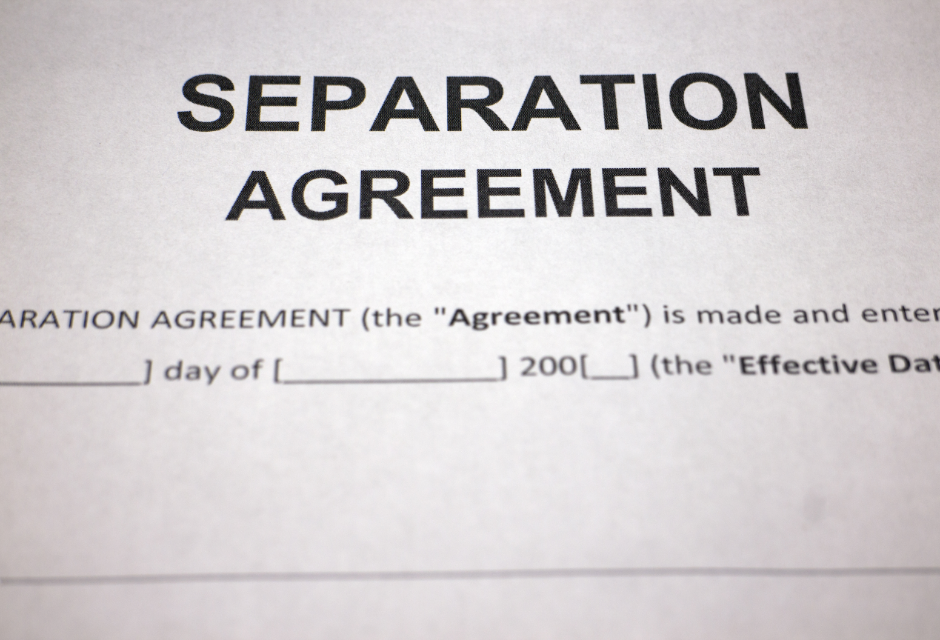As an employer, you might have come across situations where you have to terminate your employee’s employment. Ending a relationship with an employee is not an easy task, particularly, if you want to make the process smooth. This is where an employee separation agreement can help you. It is basically a document that outlines the terms of the employee’s termination in a hassle-free manner. Read on to know more about the employee separation agreement.
What is an Employee Separation Agreement?
An employee separation agreement is an important contract that allows an employer to terminate an employee without further liability. The agreement represents a legal understanding between the employer and the released employee. Make sure the agreement is drafted clearly and concisely to protect the company from post-termination lawsuits.
Most employment in the U.S. is considered at-will which means that employers can terminate their employees at any point and without cause. However, there are certain factors on which termination cannot be based. This includes termination based on discrimination on the basis of race, religion, sex, national origin, age, disability, citizenship, pregnancy, or genetic information. Also, it cannot be an act of workplace retaliation.
In most cases, the employment separation agreement makes sure that the terminated employee cannot file an unfair termination claim against the employer. This is very important because such claims can leave a negative impact on a company’s time, financial resources, and public image.
If you feel that a released employee can file an unfair termination lawsuit on the grounds of discrimination or retaliation, you, as an employer should definitely create an employee separation agreement.
What should an employee separation agreement include?
Waiver of Claims
It is very important to communicate the terms and conditions related to the employer’s waiver of claims in the separation agreement. When a soon-to-be-released employee waives his claims, he is losing the right to bring any future lawsuits against the company. The agreement should include compensation claims, employment law claims, or wrongful termination lawsuits. Make sure you read the language of the agreement carefully. This is because the exact type of lawsuit a released employee refrains from filing depends upon the language of the contract.
Severance Pay and Packages
A severance package acts as an incentive given to the soon-to-be-terminated employee to sign the agreement. It includes a collection of the benefits that a company provides to the employee upon their unwilful termination from the company. These packages usually apply to those employees who are fired, laid-off or retired. The severance package includes a plethora of benefits including additional payments, phantom stock options, health insurance, etc.
Other important clauses
Besides the waiver of claims, employers can include many other important protective clauses. Similar to the waiver of claims, these clauses should be drafted carefully. To avoid any kind of discrepancies, you can get them prepared by a legal professional. Let’s take a look at some of the clauses:
- A non-disparagement clause makes sure that the ex-employee cannot publicly downgrade the employer after the separation
- A non-compete clause to make sure that the employee cannot get employment in a similar position of a directly competing business (if permitted in your state).
- A non-disclosure provision to make sure that the terms and conditions of the agreement are kept private
- A company confidentiality agreement to make sure that the company’s confidential data such as ideas, inventions, recipes, or other types of intellectual property are kept private.
- A non-solicitation clause to prevent the ex-employee from hiring other employees or taking away your clients
Why use an employee separation agreement?
The main aim of drafting an employee separation agreement is to protect the interests of a company. However, an employee cannot sign an agreement forcefully and therefore has some leverage to make sure his or her rights are also being protected. The employee should understand exactly what rights he is giving up and that waiving these rights is worth signing the agreement
For example, if an employee is wrongfully terminated, based on discrimination, he can seek an alternative route to make sure his rights are protected and avoid signing the agreement. There should be a clear understanding of what the agreement covers for both the employees and the employers.
Special Separation Agreement for Employees Over 40
As we have discussed above, termination based on discrimination of any kind is considered a wrongful termination lawsuit. This even applies to the employees who are over the age of 40. Such employees are protected by the Older Workers Benefit Protection Act (OWBPA), a part of the Age Discrimination in Employment Act (ADEA).
The OWBPA protects employees whose age is more than 40 years from age discrimination and provides strict rules that employers have to follow when terminating older employees. Remember that the agreements for such employees should refer to the ADEA. If the employer fails to abide by the ADEA, the former employee would have the right to file a lawsuit.
In addition to this, there are some special rules that apply to employees over 40. 21 days are given to such employees to consider the severance offer before it expires. After the employees have signed the agreement, they have 7 days to revoke the agreement.
FAQs related to Employee Separation Agreement
What are the different kinds of employee separation?
There are various types of employee separation. Let’s take a look:
- Constructive discharge-This type of separation happens when the work environment is very hostile and employers create intolerable work conditions.
- Firing-This happens when the employees have poor work performance or if they violate the company’s policy. Thus, employees can be fired without a reason or warning in such cases.
- Layoff-When there is a lack of business or funding, employers may have to release employees. This is known as layoffs.
- Termination for cause-This happens when the employees may violate the company’s rules, breaches contract, or perform ethic violations.
- Termination by mutual agreement-This occurs when the employee and the employer consent to the employee separation. This includes forced resignation, retirement, or end of the contract.
- Termination with prejudice-This occurs when an employee is involved in ethical, legal, or behavioral violations. These employees cannot be rehired by former employers.
- Termination without prejudice-Termination occurs for reasons other than performance, attitude, or behavior. Such employees are eligible for rehiring.
- Involuntary termination-This type of termination takes place when an employee is fired or laid off from his job.
- Voluntary termination-This type of termination takes place when an employee resigns or retires at their own will.
- Wrongful termination-This occurs when an employee is terminated because of unlawful reasons or the company policy is violated when the employee is terminated.
- End of a work contract or temporary employment-There are some workers who work under a temporary contract with the company. When this contract ends, the employee has to be released until the contract is extended further.
Are there any laws that cover employee separation agreements?
Most states have specific laws related to employee separation agreements. There are some federal laws related to some aspects of termination arrangements. Since the legal work is complex, it is advisable to hire an attorney to draft the employee separation agreement.
Is an employer required to pay severance?
No, there is no legal obligation to pay an employee severance unless there is a contract or a policy related to this. There are some severance plans that ensure that the severance is within the sole discretion of the employer, whether to pay or not to pay, while some plans disqualify an employee from getting severance for specific reasons including voluntary resignation, or termination for cause.
Is severance conditional or unconditional?
Most of the severance plans are provided to the employees to sign the termination and waive all the claims as a condition of entitlement to the severance. There are very few severance plans that provide for unconditional severance.
How can Deskera Help You?
Deskera People allows you to conveniently manage leave, attendance, payroll, and other expenses. Generating pay slips for your employees is now easy as the platform also digitizes and automates HR processes.

Key Takeaways
- An employee separation agreement is an important contract that allows an employer to terminate an employee without any further liability
- An employee separation agreement should include waiver of claims, severance plans, and some other important clauses including non-disparagement clause, non-compete clause, non-disclosure clause, confidentiality clause, non-solicitation clause, and a lot more
- The main aim of drafting an employee separation agreement is to protect the interests of a company.
- The OWBPA protects employees whose age is more than 40 years from age discrimination and provides strict rules that employers have to follow when terminating older employees
- There are various types of employee separation including Constructive Discharge, Firing, Layoffs, Termination for cause, Termination by mutual agreement, Termination with prejudice, Termination without prejudice, Involuntary termination, Voluntary termination, Wrongful termination, and End of a work contract
- Most states have specific laws related to employee separation agreements
- There is no legal obligation to pay an employee severance unless there is a contract or a policy related to this
- Most severance packages are conditional
Related Articles











